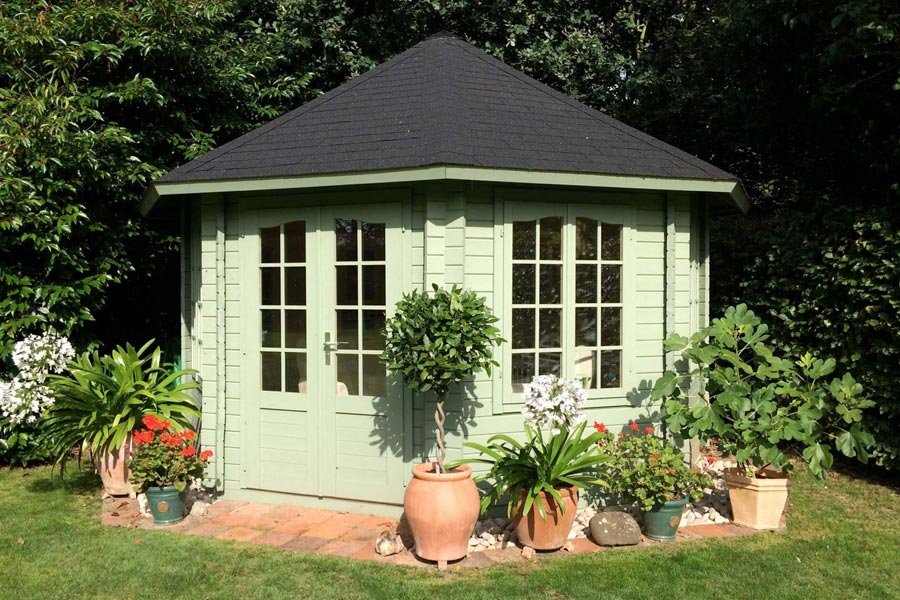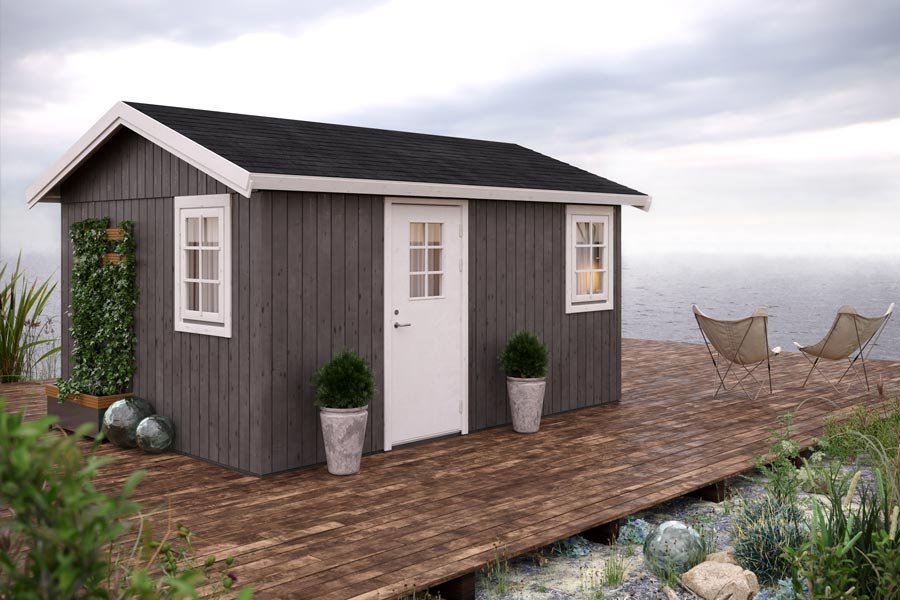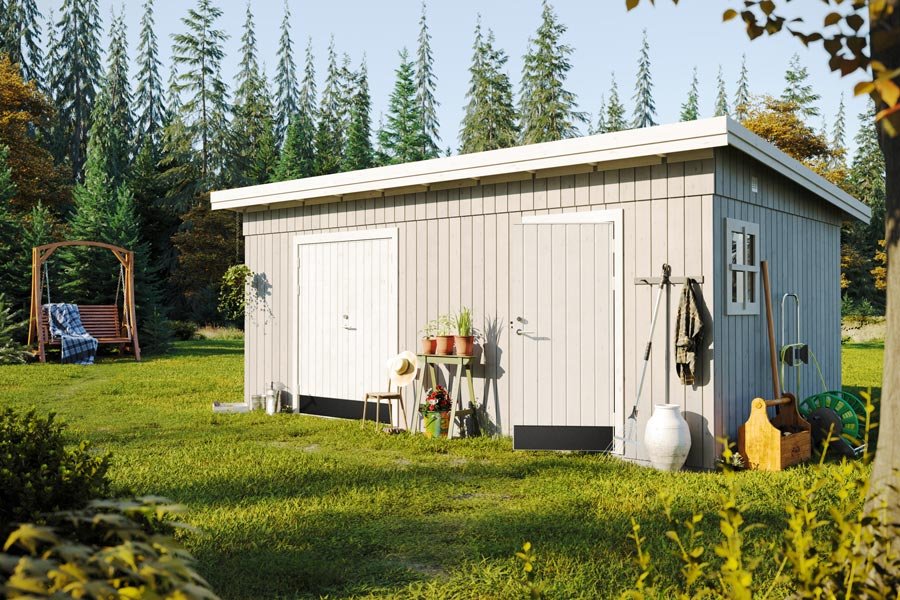In the UK, the greatest enemies of a timber garden building are moisture, rot and wind. And in winter, of course, the nation’s garden rooms, summer houses and sheds are subjected to more wind and rain and than ever. If you want a garden building to look just as good the following spring as it did the previous September, you need to do some winter-proofing.
Most jobs on the winter-proofing list are simple common-sense rather than anything technical. First, there are some one-off jobs to do – maybe once a year; then there are a few things to check regularly throughout the winter. Without further ado, here’s our seven point plan on how to protect your summer house in winter:
1. Renew wood treatments
All timber garden buildings need to be treated against rot, moisture and insects, using wood preservative treatments. If you buy a cabin from GardenLife, we advise you to do this as soon as you construct it. Depending on what product you use, you will then probably need to top up the treatment every 3-4 years – but we recommend that you lightly sand and treat your garden room or summer house at least every second year (ideally once a year for ultimate protection). Most wood treatments need to be applied in dry weather, so ideally you will do this before the rain sets in for the winter.
2. Provide ventilation space
One way to protect your garden buildings from damp and decay is to let air circulate freely around them, so that the wood can dry out and ventilate. If you have shrubs and trees close to a summer room, cabin or shed (especially if they are evergreens), cut them back before winter so that they’re not growing right up against it – allow a good foot of ventilation space. Also cut back any trees or branches that could pose a risk to roofs or windows – strong winds could easily cause branches to rip your roof felt or crash through the roof.
3. Check window seals
If you have an older shed or summer house, check for gaps around the windows, where water could seep in. It could damage the contents of the building, as well as lead to damp problems in the timber, so fill the gaps with silicone, wood filler or timber beading before any damage occurs. Strong wind can sometimes force water between the glass and the timber, so if you spot water pooling (or dry water marks) at the foot of a window pane it would be advisable to silicone around each pane for added protection.
4. Check the roof
Roofing felt and shingles don’t last forever, and depending on how exposed the site is they may need replacing every few years . Check them annually, and fix any problems before water gets through. Also, regularly check the roof after storms or winds – they may have loosened or damaged the felt. Look for signs of water inside the building as well as just looking at the outside of the roof. If your garden building is in an exposed area and subjected to strong winds that regularly damage the roof, consider adding a layer of waterproof roof membrane before replying shingles or roofing felt – this will help keep the building watertight even if shingles or felt is ripped off by strong winds.
5. Check the drainage
If the base of your cabin is slightly uneven or doesn’t allow water to drain properly, rainwater may pool around the base of the walls. This can lead to wet rot in the timber, and cause subsidence and warping. As well as having decayed timber, you will find that doors and windows no longer close properly. Before the worst of the weather sets in, try to sort out any drainage issues and look at ways to prevent water pooling. Consider replacing paving slabs with gravel, or chiselling groves into concrete.
6. Clear out the gutters
One source of water around the base may be the roof. If your shed has gutters, make sure they are clear of leaves, so that rainwater can flow where it is meant to. Clear them regularly throughout the autumn and early winter – it only takes a few damp leaves to block gutters and cause overflows in the wrong places. And on the subject of leaves, clear away the ones around the base of the shed too. Piles of wet leaves will stop water draining, and if leaf litter is left to build up against timber walls and doors it reduces air circulation under the building and can increase the chances of rot setting in.
7. Snow clearing
Finally, if there are snowfalls this winter, clear the snow off the roof of any garden buildings. If your roof is steeply pitched, the snow will probably slide off anyway, but you could give it a helping hand. Flatter roofs may take some more work, but it is time well spent – neither the weight of the snow nor its wetness will be good for your roof.
As we said, there’s no rocket science involved in how to protect your summer house in winter; it’s just a matter of simple checks. At our end, we do as much as possible to weatherproof our cabins by using dense timber and pressure-treated foundation joists, but however good and well designed your summer house, some additional winter-proofing each year is certainly worthwhile.
















